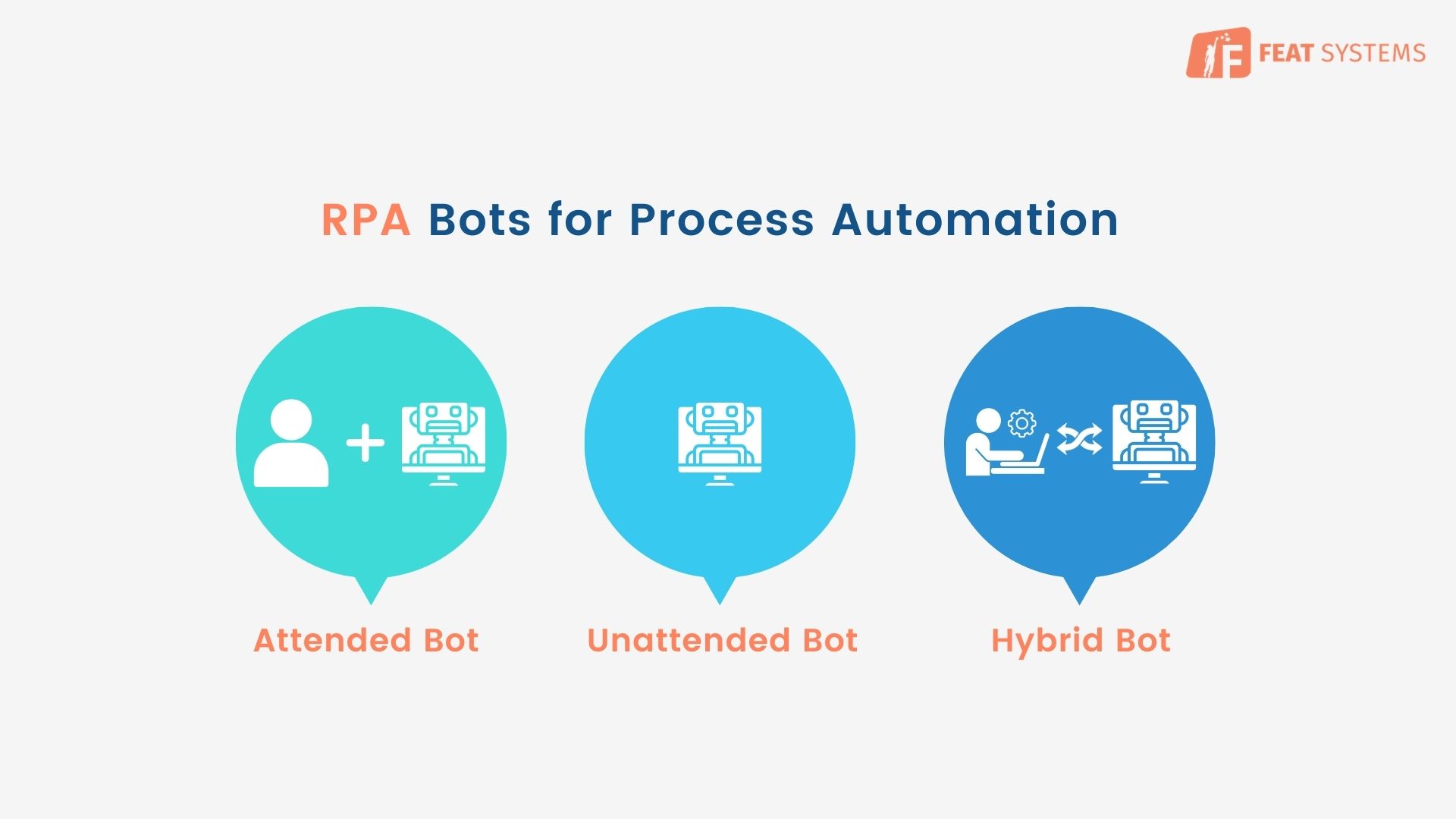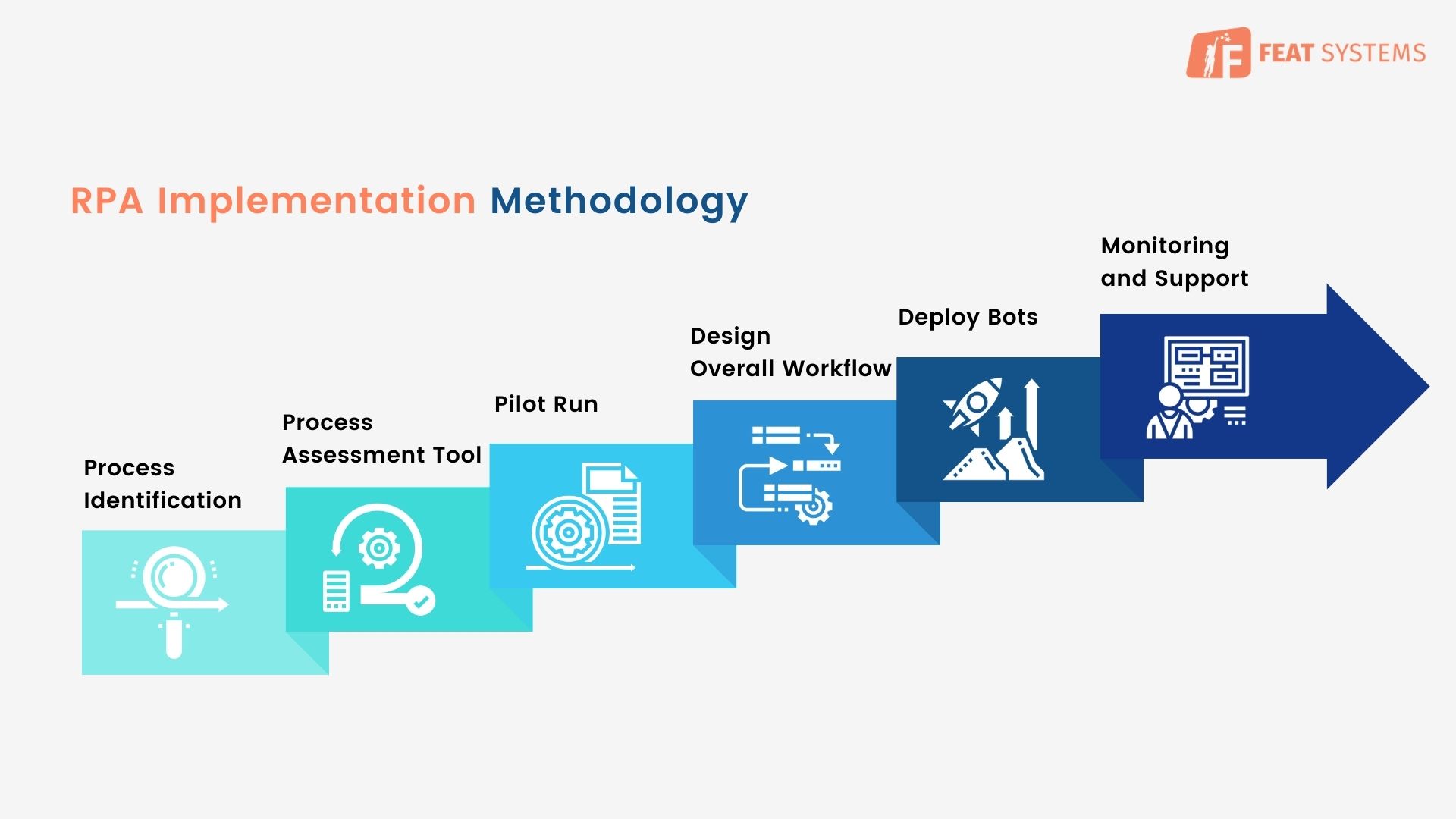Even though the word Automation was coined in the 1950s, very few are completely aware of what Robotics and Automation are all about. As the entire world is progressing towards a technologically driven process, Automation is the new trend in this process. Let us completely understand “What is RPA”, how does it work, and various other factors that affect Robotic Automation.
Robotic Process Automation is a software tool that is used to mimic human activities that use computer applications to deliver business processes. Software code is optimized according to the workflow and a virtual robot is created which is used to communicate and integrate different web/windows/other applications. The input is captured through the customized User Interface, the robot uses this input to complete the activity as per guidelines and instructions predefined and finally, the output is displayed on the UI mostly as reports. Robot Automation is predominantly used to perform a repetitive task that contains a large volume of data. It can be used for any process and can handle multiple processes across different domains.
If we have to define RPA technology in one line, it is the process of repetitive tasks guided by strict rules and instructions which is followed by a robot to imitate human activities without the intervention of a human.
If you want to change the scope of customer service at your business, we recommend you to start using and seeing the value of chatbots for your customer service:
Any activity that the human can perform can be replicated by the robot. But, a robot needs to be guided properly before it can be easily used to replace a human to perform the task. Below are the 5 steps that will help you start your Robotic Automation process:
Start the project by clearly defining which activity or process requires automation. The defined activity should have an input, a sequence of steps to be performed to generate an output that can be measured. Once the workflow design is created, it becomes easy to implement the Robotic automation Tool.
Any process workflow requires a proper assessment before starting the implementation. Our Process Assessment Tool helps the Business to identify:
Eligibility
Complexity
ROI
Priority
Understand more about Process Assessment Tool and get Eligibility Analyzer test by visiting the page
The major decision-making factor that attracts a businessman to do business is the cost-benefit analysis. A Process Automation project can be subjected to a before-after analysis keeping the following checklist in mind:
Number of employees involved to complete the same task
Time to complete each transaction and the overall process
Number of transactions that can be completed in one hour by an employee and by the robot
Accuracy of the transactions completed
Number of successful error-free transactions
Now that the team is ready with all the processes that need automation and is convinced that Robotic Process Automation tools will add benefits to complete the processes, the next step is to identify the best tool.
Some tools give a lot of customizable options, while some others would recommend the usage of APIs. Some tools would provide you a developer who will handle your complex processes while some others would help you create a workflow for your process easily.
In the Robotic Automation Tools section, we will learn more about the different RPA Software's Test the process.
All that we have done till now is just the theoretical part. It is always advisable to understand how practical and feasible the process is before implementing it on a large scale. To do this, we can start testing the process through the RPA tool in different ways:
Test the complete process in batches
Test different activities of the process in batches. Once you are satisfied with the result, go to the next activity.
Use the agile framework to test the process.
There are three types of RPA bot used for automation depending upon the process requirement
Attended RPA bots are designed to handle Automation workflows which require continuous interaction between human and bots. Here, a software bot behaves similarly to a digital assistant to an employee mimicking human activities that focus on certain rule-based standards.
The best example that can be quoted for Attended Bots is customer service providers. When a customer calls an agent, he can use a bot to fill up customer information. After listening to the customer’s query, the agent can trigger the bot which will continue the process of generating the ticket and sending it to the concerned department. Hence, an agent has to focus on decision-making tasks and allow the Robot to complete the remaining rule-based repetitive tasks.
With Unattended bots, there is no dependency on humans. Such bots can automate the entire workflow by themselves without any human intervention.
The bots in this category are populous to handle transaction-based activities even when an employee is logged off from the system.
The best-case study to use unattended bots to process invoices or create a bank account. A bot is designed to handle the step-by-step process in such workflows and repeat the same for as many transactions as available on the database.
When a situation requires both attended and unattended bots, Hybrid bots come into the picture.
Hybrid bot's examples can be quoted in approval processes such as invoice processing. If there are 50 templates of invoices out of which 25 templates do not require any approval, the unattended workflow can be created for these whereas for the remaining 25 templates which require approvals, attended workflow can be designed. Such processes require hybrid bot automation.
We, at Feat, provide end to end Automation methodology which is initiated with process identification and goes on till post-production support. Our target is to satisfy our customers with high-quality solutions and the same rigor is applied during the RPA implementation stage to deliver efficient workflow with a high return on investment.
The implementation team generally follows the below steps to provide customized and efficient RPA workflow for all our customers:
Once we understand your company’s overall workflow, we identify all those processes which can be converted to an Automation workflow.
After identifying the process, we subject the processes to our tool to understand the feasibility and reliability of the selected automation process.
We develop a Proof of Concept (POC) and run a pilot workflow for the identified automation workflows.
After getting the expected results from Pilot runs, we completely design the automation flow for the Robots to work on.
The bots are fed into the RPA orchestrator queues and they are trained to automate the process as per the workflow design created.
Once, the bots start giving the expected results, the team monitors the process workflow to minimize the errors and provide 100% accurate results. Also, post-production support is providing continuously for the smooth functioning of the process.
Robotic process automation is widely used by many companies globally mainly because of the value it generates, If anyone does a cost-benefit analysis for a Robotic process, they will for sure be satisfied with the results. It's a one-time investment heaping a lifetime benefit. The major advantages of using RPA extensively lies in the below factors:
The level of accuracy increases.
Reduce the overall cost of the process and increase profits.
Generating reports on how many transactions were performed.
Replacing human resources efficiently.
Reducing the dependency on a large number of workforces.
By managing a large amount of data effectively.

RPA Robotic Process Automation is a tool that can be used to replace most of the business processes within a company. Major RPA companies like Accenture, Cisco, PwC, Deloitte, Genpact, Harley Davidson, etc. use Robotic Process Automation software extensively in their workflows. The major applications which can be replaced by RPA can be listed as below:
Data can be extracted from an application and added to other applications. This can be majorly used in the Insurance and Banking domains.
Many customer care services can fill customer-related forms after interacting with customers and also collect feedback from them.
An RPA bot can easily handle employee’s details like salary, designation, incentives, work progress, and other HR-related information.
After any process, a thorough customized report can be generated by analyzing the results of the transactions of the process.
Robots can be used to transfer data from one application to another. Image Processing: Robots can extract data from check books or receipts and add them to the financial database.
We, at Feat, provide you end-to-end automation solutions for all your manual problems. To know more about our RPA services click here.
We're here to help.
Need Help ? ASK FIBO




